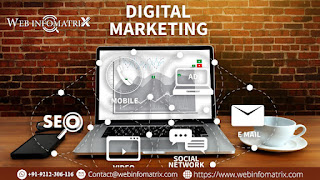In today’s competitive job market, organizations are facing a critical challenge: attracting and retaining top talent. The key to addressing this challenge lies in reinventing the Employer Value Proposition (EVP). An EVP is a strategic tool that defines the unique benefits and experiences an organization offers to its employees. It encompasses everything from company culture and career development opportunities to compensation and work-life balance. This article provides a comprehensive analysis of the EVP and offers a practical model for organizations looking to redefine their EVP to better attract and retain talent.
Understanding the Employer Value Proposition (EVP)
What is EVP?
The Employer Value Proposition is the collective set of benefits, rewards, and opportunities that an organization offers to its employees in exchange for their skills, capabilities, and experience. It is a critical component of an organization's overall employer branding strategy and serves as a promise to current and prospective employees about the unique advantages of working for the company.
Why is EVP Important?
- Talent Attraction: A compelling EVP helps organizations stand out in a crowded job market, making it easier to attract top talent.
- Employee Retention: A strong EVP fosters employee engagement and satisfaction, which can lead to higher retention rates.
- Employer Branding: The EVP plays a crucial role in shaping the organization’s brand as an employer, influencing how it is perceived by potential candidates.
Analyzing the Current State of EVPs
1. Market Trends and Employee Expectations
To effectively reinvent the EVP, organizations must first analyze current market trends and employee expectations. Key trends impacting EVPs include:
- Remote Work: The shift towards remote and hybrid work models has redefined the expectations around flexibility and work-life balance.
- Career Development: Employees increasingly seek opportunities for professional growth and skill development.
- Diversity and Inclusion: There is a growing emphasis on creating inclusive workplaces that value diversity.
- Well-being: Mental health and overall well-being have become significant factors in employee satisfaction.
2. Assessing Your Current EVP
Organizations should conduct a thorough assessment of their existing EVP to identify strengths and areas for improvement. This involves:
- Employee Surveys: Gather feedback from current employees to understand their perceptions of the EVP and identify any gaps.
- Competitive Analysis: Analyze the EVPs of competitors to understand industry standards and identify unique selling points.
- Employer Brand Audit: Evaluate how the organization’s employer brand is perceived externally through online reviews, social media, and other channels.
Reinventing the EVP: A Practical Model
1. Define Your Unique Value Proposition
To reinvent the EVP, organizations must start by defining what sets them apart from competitors. This involves:
- Identifying Core Strengths: Assess what the organization does exceptionally well and how these strengths can be leveraged in the EVP.
- Understanding Employee Needs: Align the EVP with the needs and desires of current and potential employees. This may involve revisiting compensation structures, work arrangements, and career development opportunities.
- Articulating the Promise: Clearly articulate the unique value the organization offers, ensuring it is compelling and resonates with the target audience.
2. Develop Key EVP Components
A successful EVP typically includes several key components:
- Compensation and Benefits: Offer competitive salaries and a comprehensive benefits package that meets the needs of employees. This can include health insurance, retirement plans, and bonuses.
- Career Development: Provide opportunities for career growth, including training programs, mentorship, and clear career progression paths.
- Work-Life Balance: Implement policies and practices that support work-life balance, such as flexible work hours, remote work options, and generous leave policies.
- Company Culture: Foster a positive and inclusive company culture that aligns with the organization’s values and mission. This includes creating a supportive work environment and recognizing employee achievements.
3. Communicate the EVP Effectively
Effective communication is crucial for a successful EVP. Consider the following strategies:
- Employer Branding: Use various channels, such as the company website, social media, and job postings, to communicate the EVP to potential candidates.
- Internal Communication: Ensure that current employees are aware of and understand the EVP. Regularly communicate the organization’s values and benefits through internal newsletters, town halls, and other channels.
- Consistent Messaging: Maintain consistency in messaging across all communication platforms to reinforce the EVP and build trust with both current and prospective employees.
4. Implement and Monitor the EVP
Once the new EVP is developed and communicated, it’s essential to implement it effectively and monitor its impact:
- Integration: Integrate the EVP into all HR practices, including recruitment, onboarding, and performance management.
- Feedback Mechanisms: Establish mechanisms for collecting feedback from employees and candidates to gauge the effectiveness of the EVP.
- Continuous Improvement: Regularly review and update the EVP based on feedback, market trends, and organizational changes. This ensures that the EVP remains relevant and effective.
5. Case Studies: Successful EVP Reinvention
To illustrate the practical application of the EVP model, consider the following case studies:
Company A: Remote Work Flexibility
Company A, a tech startup, faced challenges attracting talent in a competitive market. They reinvented their EVP by emphasizing their flexible remote work policy, career development opportunities, and inclusive culture. This approach led to a significant increase in job applications and improved employee retention.Company B: Focus on Well-being
Company B, a financial services firm, revamped their EVP to prioritize employee well-being. They introduced comprehensive mental health support, wellness programs, and flexible work arrangements. The new EVP resulted in higher employee satisfaction and a stronger employer brand.
6. Addressing Common Challenges
Reinventing the EVP can come with challenges. Here are some common issues and how to address them:
- Resistance to Change: Employees and leadership may resist changes to the EVP. Address this by involving key stakeholders in the development process and clearly communicating the benefits of the new EVP.
- Alignment with Company Goals: Ensure that the EVP aligns with the organization’s overall goals and strategy. This requires collaboration between HR, leadership, and other departments.
- Measuring Success: Establish clear metrics for measuring the success of the EVP, such as employee engagement scores, turnover rates, and recruitment metrics.
Reinventing the Employer Value Proposition is a strategic endeavor that requires careful analysis, planning, and execution. By understanding market trends, assessing the current EVP, and following a practical model for development and communication, organizations can create a compelling EVP that attracts and retains top talent. A well-defined and effectively communicated EVP not only enhances the employer brand but also contributes to overall organizational success.
Organizations should view the EVP as a dynamic and evolving component of their HR strategy. Regularly reviewing and updating the EVP based on feedback and changing market conditions ensures its continued relevance and effectiveness. By prioritizing the needs and expectations of employees, organizations can build a strong, engaged, and motivated workforce that drives long-term success.
FAQs
1. What is an Employer Value Proposition (EVP)?
Answer: An Employer Value Proposition (EVP) is a strategic statement that defines the unique benefits and experiences an organization offers to its employees in exchange for their skills, capabilities, and experience. It includes aspects such as company culture, career development opportunities, compensation, and work-life balance.
2. Why is it important to reinvent the EVP?
Answer: Reinventing the EVP is crucial for staying competitive in the job market, attracting top talent, and retaining current employees. A well-defined and updated EVP helps organizations differentiate themselves from competitors, align with evolving employee expectations, and enhance their employer brand.
3. How can I assess the current state of my organization's EVP?
Answer: To assess your current EVP, you can:
- Conduct employee surveys to gather feedback on their perceptions and experiences.
- Analyze the EVPs of competitors to understand industry standards and identify unique selling points.
- Perform an employer brand audit by reviewing online reviews, social media mentions, and other public perceptions.
4. What are the key components of a successful EVP?
Answer: A successful EVP typically includes:
- Compensation and Benefits: Competitive salaries and comprehensive benefits packages.
- Career Development: Opportunities for professional growth, training, and mentorship.
- Work-Life Balance: Flexible work arrangements and supportive leave policies.
- Company Culture: A positive, inclusive work environment that aligns with the organization’s values.
5. How can organizations effectively communicate their EVP?
Answer: Effective communication of the EVP involves:
- Employer Branding: Using the company website, social media, and job postings to highlight the EVP.
- Internal Communication: Ensuring current employees are aware of the EVP through newsletters, town halls, and other channels.
- Consistent Messaging: Maintaining consistent messaging across all communication platforms to reinforce the EVP.
6. What steps should organizations take to implement and monitor their new EVP?
Answer: To implement and monitor the new EVP:
- Integration: Incorporate the EVP into HR practices such as recruitment, onboarding, and performance management.
- Feedback Mechanisms: Set up systems to collect feedback from employees and candidates.
- Continuous Improvement: Regularly review and update the EVP based on feedback, market trends, and organizational changes.
7. Can you provide examples of successful EVP reinventions?
Answer: Examples include:
- Company A: A tech startup that emphasized remote work flexibility, career development, and an inclusive culture, leading to increased job applications and improved retention.
- Company B: A financial services firm that focused on employee well-being by introducing mental health support, wellness programs, and flexible work arrangements, resulting in higher satisfaction and a stronger employer brand.
8. What are some common challenges when reinventing the EVP and how can they be addressed?
Answer: Common challenges include:
- Resistance to Change: Involve key stakeholders in the process and clearly communicate the benefits of the new EVP.
- Alignment with Company Goals: Ensure alignment with overall organizational goals by collaborating across departments.
- Measuring Success: Establish clear metrics, such as employee engagement scores and recruitment metrics, to track the effectiveness of the EVP.
9. How often should an organization review and update its EVP?
Answer: Organizations should review and update their EVP regularly, at least annually or whenever there are significant changes in the job market, employee expectations, or organizational goals. Regular updates ensure the EVP remains relevant and effective.
10. How can employee feedback be effectively incorporated into the EVP?
Answer: To incorporate employee feedback:
- Conduct Surveys: Regularly survey employees to gather insights on their needs and perceptions.
- Hold Focus Groups: Organize focus groups to dive deeper into specific areas of interest.
- Act on Feedback: Use the feedback to make meaningful changes to the EVP and communicate those changes to employees.
Get in Touch
Website – https://www.webinfomatrix.com
Mobile - +91 9212306116
Whatsapp – https://call.whatsapp.com/voice/9rqVJyqSNMhpdFkKPZGYKj
Skype – shalabh.mishra
Telegram – shalabhmishra
Email - info@webinfomatrix.com

%20(1).jpg)
.jpg)
.jpg)
.jpg)






 English (US) ·
English (US) ·